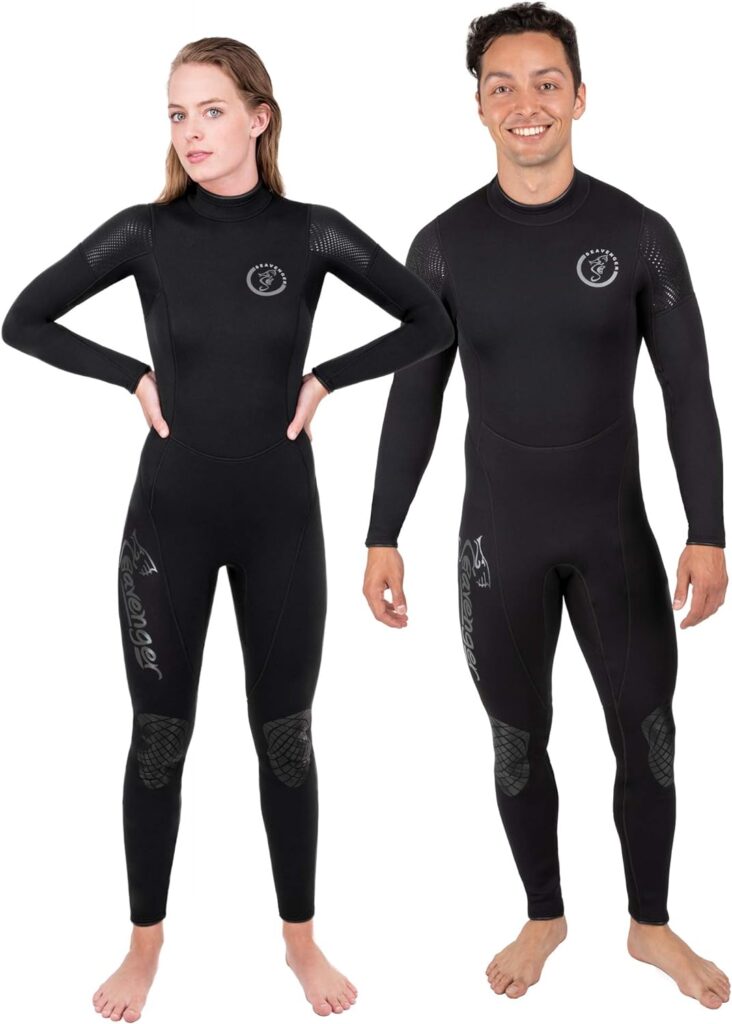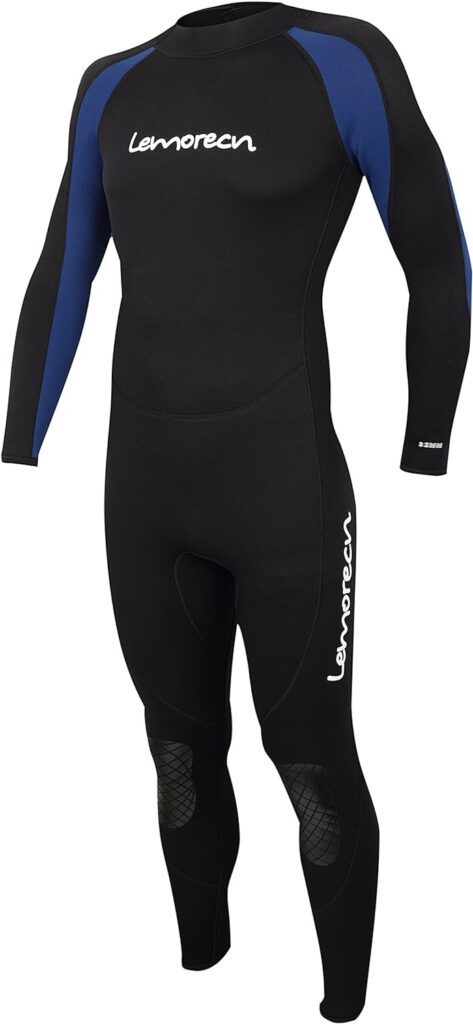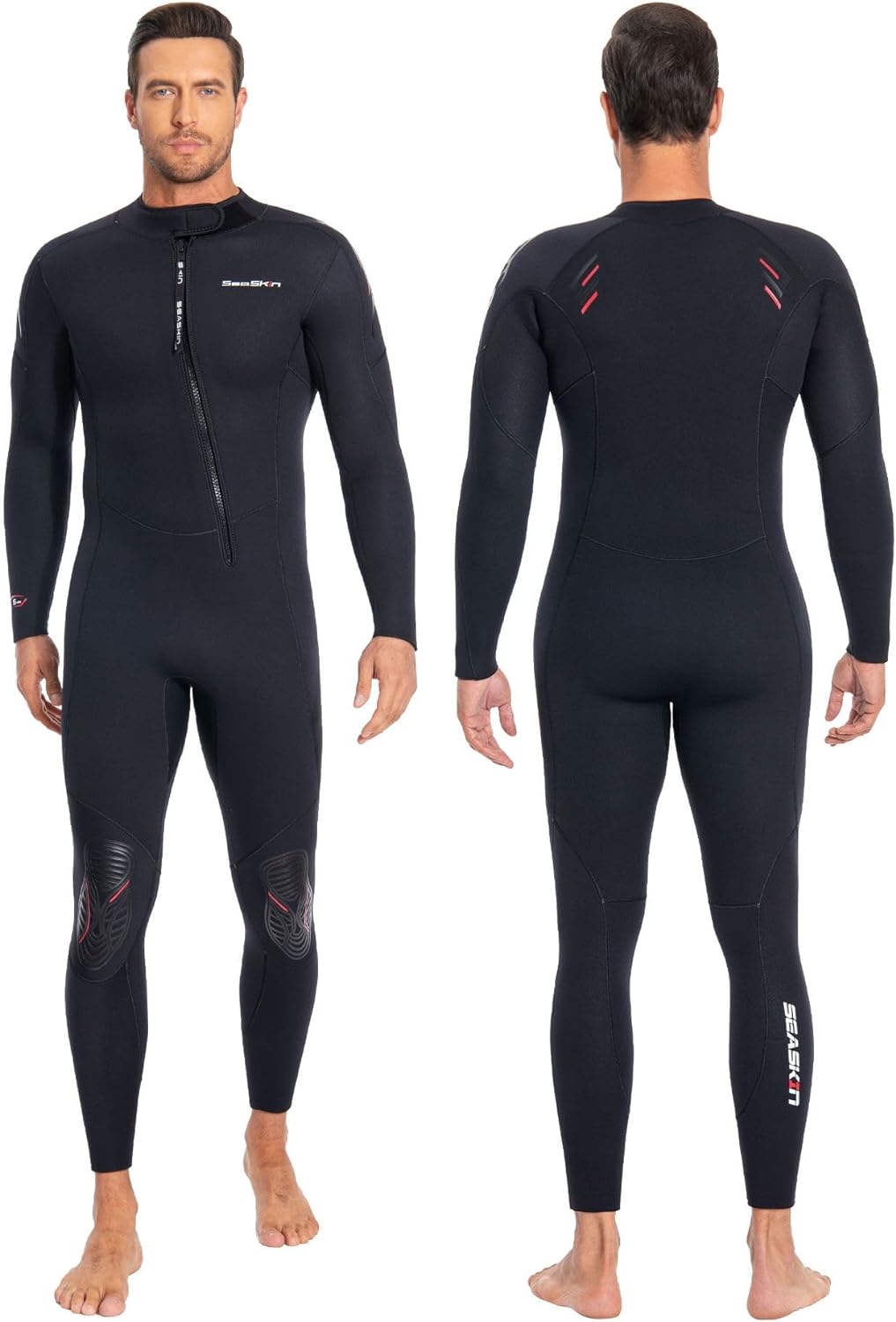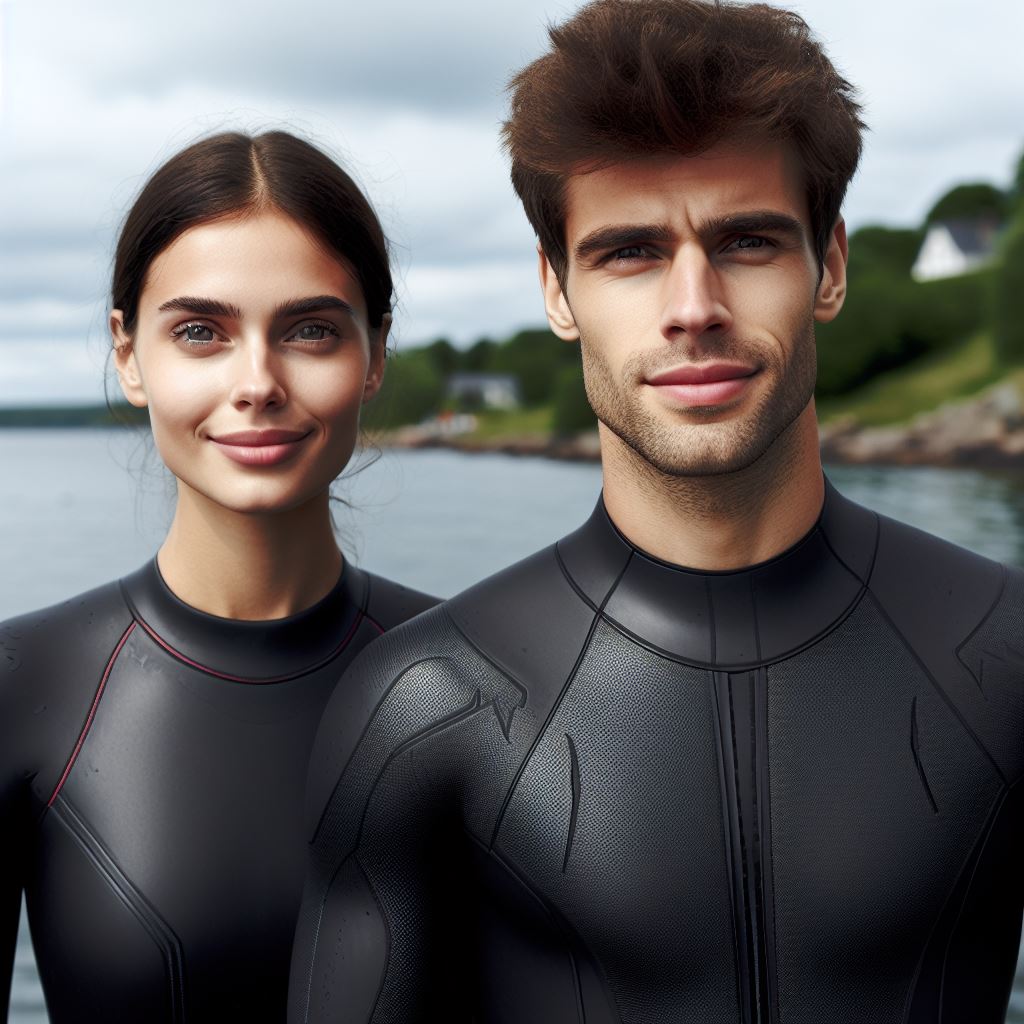How To Pick A Wetsuit
Picking the right wetsuit is just as important as breathing in oxygen, which is why you need to know how to pick a wetsuit. If you do water sports, a wetsuit is a must. Imagine paddling out into exhilarating waves, only to be met by a bone-chilling surprise.
That’s what happened to me on my recent paddleboarding adventure. Fueled by sunshine and optimism, I braved the (seemingly) balmy water in just my swimsuit. Big mistake. Within minutes, I resembled a popsicle dipped in sea brine. My teeth chattered like maracas, and paddling felt like trying to move through Jell-O.
Needless to say, my “epic” ocean journey became a desperate dash back to shore. Let’s just say the seagulls got a real kick out of my full-body shivers. But hey, we all learn from our (often hilarious) mistakes, right? You won’t have to reenact my frosty paddleboard fail! This guide will help you find the perfect wetsuit for your aquatic adventures.
RELATED: Can Sunscreen Expire? – Uncovering The Surprising Truth
How To Pick A Wetsuit
Whether you are a beginner or a professional water sports enthusiast, you know the importance of wetsuit cannot be underestimated. But how to pick a wetsuit perfect for your adventure is as important as the wetsuit itself.
From thickness to sizing and features, let’s get to know how to pick a wetsuit that is right for your health and the kind of adventure you want to engage in. Here is what to look out for when choosing the best wetsuit for your adventures:
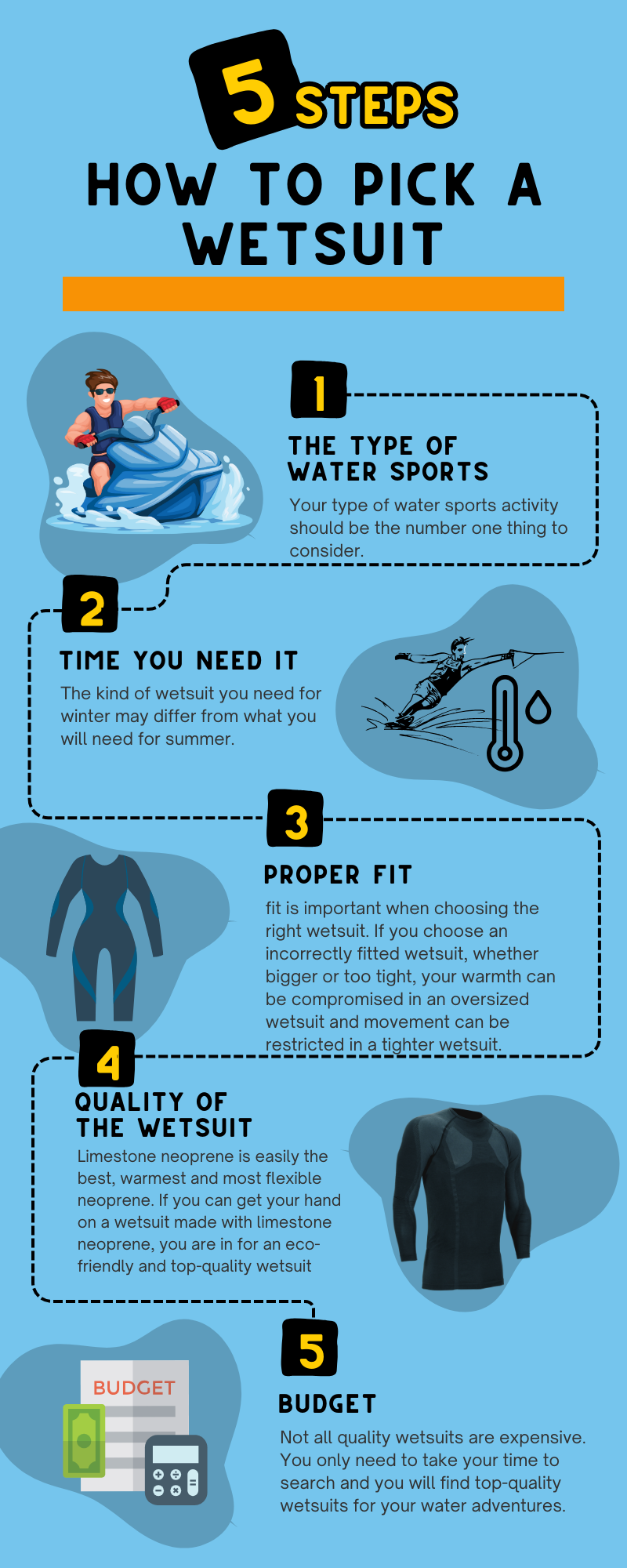
1. Determine The Activity You Are Using The Wetsuit For
Wetsuits are not created equal just as our health status is not created equal. The type of water sports activity you will be using your wetsuit for should be the number one thing to consider when shopping for a wetsuit.
For instance, the wetsuit you can use for surfing differs from the one you can use for swimming. The wetsuit for surfing should focus on keeping you warm. Yes, all wetsuits are designed to keep you warm in or on water, but the thickness is different.
A person competing in triathlon needs a lighter wetsuit than those in water sports like bodyboarding and surfing. So, your water activity should determine which wetsuit to pick.
2. Consider Where And When You Will Be Using The Wet Suit
Determining the activity you want to use your wetsuit for is not the only thing to do, you should also consider the temperature and thickness. The kind of wetsuit you need for winter may be different from what you will need for summer. Water temperature differs and you don’t want to wear a light wetsuit in colder water.
Each wetsuit is created for different activities and temperatures. So, it is necessary to the temperature of the water you will be entering when choosing your wetsuit. Here is the wetsuit thickness guide, a handy rule of thumb for choosing a wet suit based on temperature:
| Water Temperature | Wetsuit Thickness | Description | Recommended Activities | Types of Wetsuits |
| Warm Water (above 70°F/21°C) | 1-2mm | A thin spring suit or a rashguard for sun protection and light warmth. | Swimming, snorkeling, beach activities | Spring suit, Rashguard |
| Moderate Water (60-70°F/15-21°C) | 3/2mm | Offers a balance of warmth and flexibility with 3mm neoprene covering the core and 2mm allowing for arm and leg movement. | Surfing, kayaking, paddleboarding | Full wetsuit |
| Cool Water (50-60°F/10-15°C) | 4/3mm | Provides significant insulation with 4mm neoprene in the torso and legs for core warmth and 3mm in the arms for paddling ease. | Surfing, diving, sailing | Full wetsuit |
| Cold Water (below 50°F/10°C) | 5/4/3mm or 6/5/4mm | Prioritizes warmth with thicker panels throughout, suitable for frigid waters. | Cold water diving, winter surfing, open water swimming in polar regions | Full wetsuit, Hooded wetsuit (optional) |
Note: Some People have personal tolerance for cold so, you want to follow these:
- Personal Tolerance For Cold: If you naturally run cooler or tend to feel chilly easily, you want to raise the thickness by 1mm to avoid getting cold.
- Windchill: Depending on your activity or where you carry out your water activity, wind whipping across the water can steal your warmth. You should consider it especially if you are surfing or paddling.
- Activity Level: If you are involved in high-exertion activities, they generate more body heat and you can easily get away with thinner suits.
3. Ensure Proper Fit
Just like in anything you wear such as water shoes, fit is important when choosing the right wetsuit. If you choose an incorrectly fitted wetsuit, whether bigger or too tight, your warmth can be compromised in an oversized wetsuit and movement can be restricted in a tighter wetsuit.
Even the most expensive wetsuit that is oversized will not keep you warm so; the fit is everything. Your wetsuit should fit like a second skin, snug but not constricting. Here is how to find a perfect fit:
- Measure Yourself: If you are buying online, this is very important. Make sure to use the sizing chart. Measure your height, weight and chest/waist.
- Try Before Buying: If possible, you should try it on before you finally buy it. Move around in it, paddle and bend to see if it will restrict movement. Don’t be afraid of tightness because the suit will loosen when it gets wet. So, it should fit snugly when dry. It should not bunch up or have excess fabric around your neck, wrists and ankles.
A little discomfort in tightness, when the suit is dry, is okay. The suit should not pull down on your shoulder or neck. It should also not restrict your arm movement. If you are unable to move freely, the suit is probably too small.
Make sure that the wetsuit is fit at the torso and lower back. Ensure the legs of the suit are pulled up correctly to the knees. The knee pad should also be in the right position when you wear it.
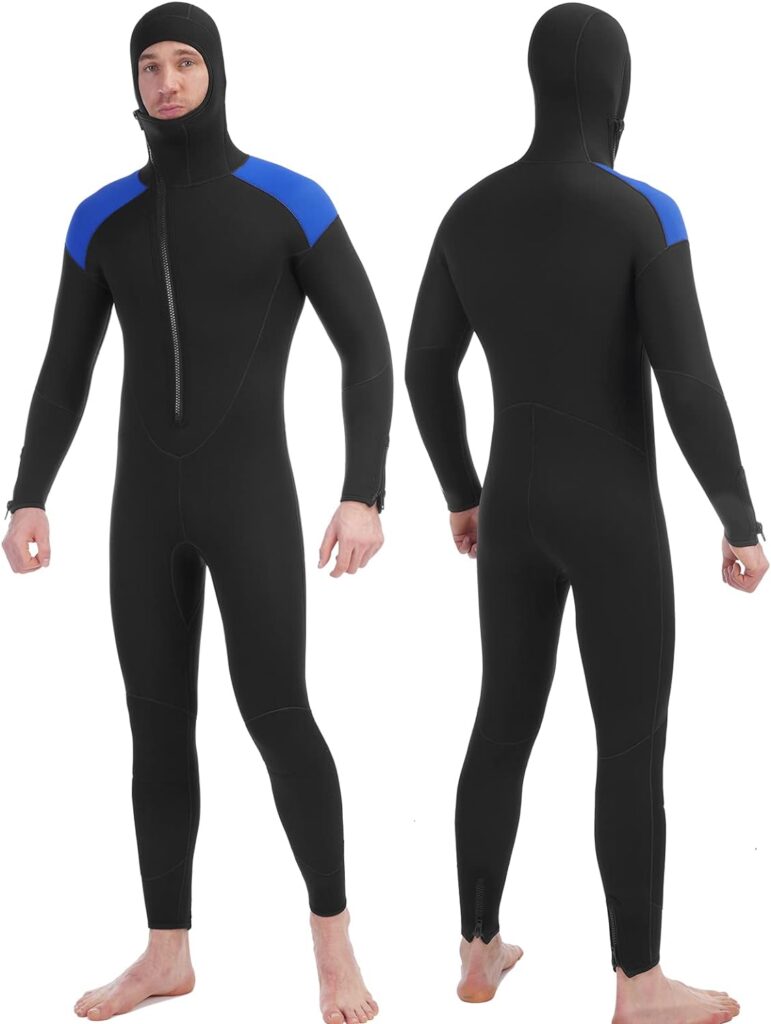
4. Consider The Quality Of The Materials And Construction
Wetsuits are usually made of neoprene but the type of neoprene will determine what you get from your wet suit. Limestone neoprene is easily the best, warmest and most flexible neoprene. If you can get your hand on a wetsuit made with limestone neoprene, you are in for an eco-friendly and top-quality wetsuit.
But, look at the stitching carefully. Seams can be glued, blind-stitched or taped for added strength and water resistance. Fully sealed seams minimize water entry and enhance warmth. GBS (Glued and Blind Stitched) seams are the best, so look out for them in your wetsuit. You should also consider the following:
- Zipper placement: Back zips offer more flexibility when putting on/off the suit, while chest zips provide a more watertight seal (ideal for colder water).
- Seams: Stitching methods like flatlock seams minimize water entry and chafing.
- Knee pads: Protect your knees from wear and tear during paddling or kneeling on a surfboard.
- Hoods and booties: Consider these for extra warmth in colder water.
Pro Tip: Many brands offer wetsuits with features like windproof linings or quick-drying materials for added comfort and performance.
5. Your Budget Matters
Well, even if you consider everything mentioned above, your budget matters. If you do not have the budget for the above features, it may be difficult to find the perfect wetsuit for your water adventures.
But let me tell you that not all quality wetsuits are expensive. You only need to take your time to search and you will find the quality your water adventures deserve.
RELATED: Do You Need a Wetsuit to Surf? Uncover the Truth Now!
The Bottom Line On How To Pick A Wetsuit
If you are looking for how to pick a wetsuit, there you have it. Choosing the right wetsuit doesn’t have to be a hassle. What you need to do is consider your type of activity, temperature, fit, material, quality and some other features like seams. If your budget is low, search continuously until you find the quality you want for your budget.
